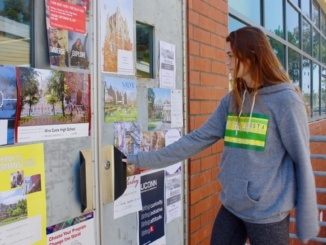
By Kellie Mullin
Staff Writer
This year’s Red Ribbon Week assembly, put on by Costa’s People Achieving Complete Equality class, was considered ineffective because it is generally ignored and does not relate to Costa students strongly enough to make a real difference.
The stories told by the five guest speakers at the assembly spoke intensely about worst-case scenarios of drug abuse, provoking sympathy from students. However, hearing such tragedies does not necessarily affect a student’s decision to use drugs or alcohol. This is because the scenarios are so extreme that most students do not consider themselves at risk of reaching that point.
According to junior Brianna Orneales, many teenagers who use drugs or drink alcohol do not change their habits after attending the assembly. It is often said that the weakness of youth is a false sense of invincibility. This attitude greatly hinders students’ ability to learn from the stories told at the PACE assembly.
The speakers this year, who had little to no background in public speaking, were brave to volunteer to speak about their pasts for a good cause, but because they were not speakers by trade, their messages did not reach students as effectively as possible. If the speakers had been more rehearsed, the stories may have had a greater impact.
Additionally, having the same type of assembly every year, in which young adults tell their stories of how drugs or alcohol lead them down the wrong path in life, is repetitive and becomes something students tune out. Instead of being scared of drug use, students begin to see the stories as less of a warning and more of a routine.
Some believe the assembly is misleading because it insinuates that all students who experiment with drugs and alcohol will end up addicted to hard drugs, when this is not the case. According to science teacher Harold Coller, some students will decide to go on to use hard drugs, but many have the self control to know when to stop. Many agree that the assembly would be more relatable if its focus were primarily on the use of alcohol and marijuana, which as stated by the National Institute of Drug Abuse are among the most heavily abused substances at the high school level.
According to Coller, the PACE assembly this year did not adequately discuss the effects of drugs on not only the abuser, but their friends as well. According to a study done by the University of Michigan, peer pressure amongst teenagers is one of the most prominent sources for adolescents to start using drugs. This point would be shown more effectively if there were speakers who were friends or family of a person who had a substance abuse issue.
This year’s assembly also lacked any attention-grabbing slide shows or videos, which are helpful when trying to engage students. This would diversify the presentations and allow for more dynamic and interesting speeches. Storytelling was the only method of persuasion used to show kids the effects of alcohol and drugs, which on its own, was not enough to sway the apathetic audience.
The assembly would be more effective with an interactive question and answer segment. Additionally, sharing statistics or showing harmful side effects from prolonged drug use would help emphasize the tangible risk these drugs represent.
The PACE assembly addressing drugs and alcohol is beneficial in concept, but in order to affect and relate to more students, it must be executed in a more structured and original manner.




Leave a Reply